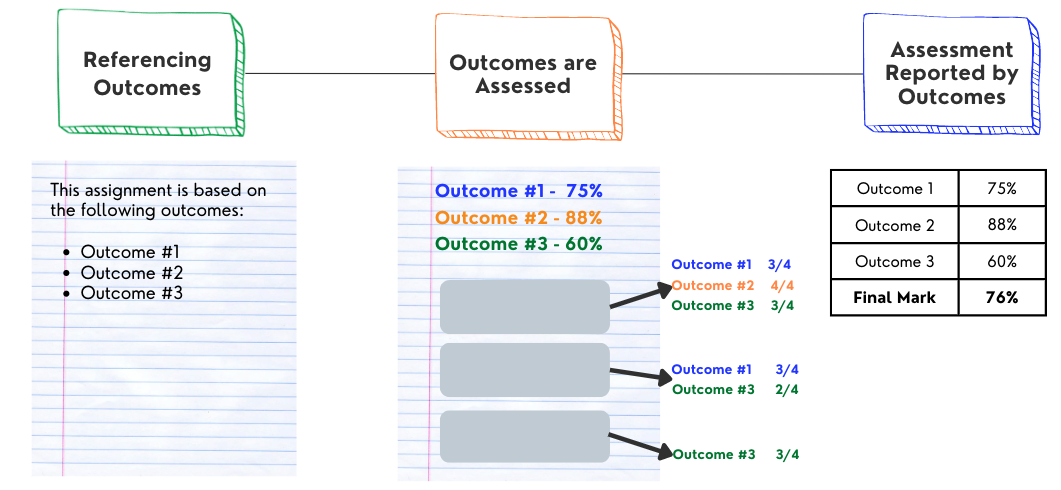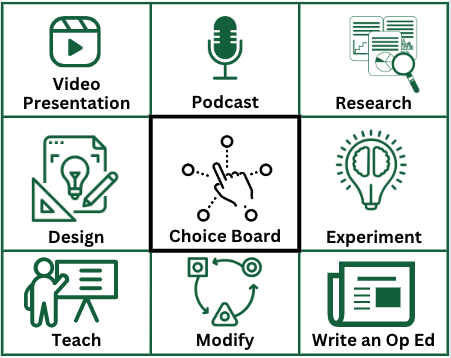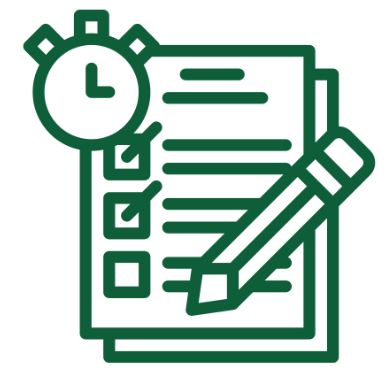How to get students to hand in quality work by planning for choice
In my course, at this level, at this place of progress in their learning, what do students need to demonstrate to me?
Handout version for USask Instructors
What do I expect of my students?
Offering choice in how students meet course objectives is rooted in inclusive education and that by providing choice we acknowledge and respect that there are many ways to demonstrate learning and students have the agency, when appropriate, to pick the one that motivates them. These checklists might help you think about “shifting the ‘locus of control’ from the teacher to the student” (Jopp & Cohen, 2020)
There are three methods described: when students pick the medium of transmission for a final project, when students pick the topic of a paper or structured project, and lastly, when students help set the criteria for the assessment. The last one is my favourite because it forces the students to really think about what ‘good’ means, not just the content to transmit.
Allow students to choose the format of their final project – follow these steps
- I have reviewed the outcomes in my course.
- I have determined the outcomes that are best suited for offering choice.
- I can think of a few ways a student could show me how they meet this specific outcome.
- I have considered how students might present a portfolio of work to present their learning of the outcome.
- I can make ONE assessment tool (such as a rubric or checklist), such that no matter which option students choose, I can use the same marking scheme. AACU Values Rubrics are a good starting place https://www.aacu.org/value-rubrics
- All options would demonstrate understanding to a similar depth and breadth of disciplinary ability.
Have students choose the topic for their project or paper
- I have a date when the assignment needs to be completed.
- I have a date when a first draft should be completed.
- I have a plan for when and how students will give each other feedback on their progress.
- I have determined when I want to review students’ project plans – before they get too far down the road to make significant changes.
- I have an idea of how much time I need to allocate to review students’ work or what my review supports look like (TAs, assistants, mini-interviews).
- I have a plan for how I will introduce the project, its criteria, the options for students, the marking scheme (rubric or checklist), and present the timeline with deliverables to students.
- I have a timeline of all of the above and am ready to share it with students.
Co-create the rubric or assessment tool with students
- I know what ‘good enough’ looks like.
- I know what ‘not good enough’ looks like.
- I have anonymized examples of sufficient and insufficient that I could show students.
- Students know the small steps or pieces that compose this larger assignment and can describe them.
- I ask students for their feedback about what they think is important in an assignment.
- I ask students what they think would qualify as good.
- I work with students to make a checklist of what would be required to qualify as ‘good’ (criteria).
- I am reflecting on how to use a checklist, rubric, or other marking guideline to communicate my expectations with students.
References:
Jopp, R., & Cohen, J. (2020). Choose your own assessment – assessment choice for students in online higher education. Teaching in Higher Education, 1-18.
https://www.utsc.utoronto.ca/technology/assignment-scaffolding


